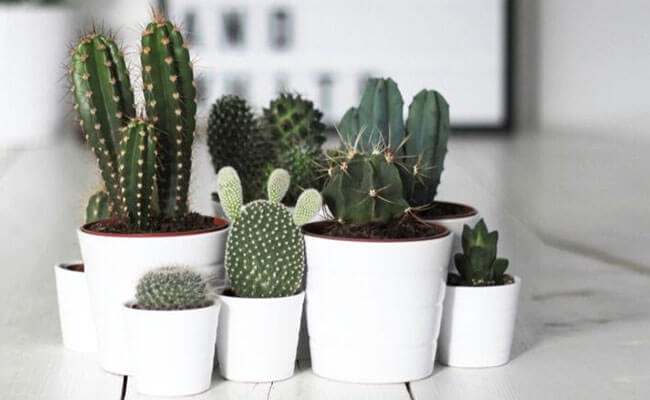Table of Contents
Are you fascinated by those cutesy spine-covered, fleshy and leafless plants? Well, you are not the only one. Cacti and succulents are one of the most popular categories of houseplants preferred by people all over the world due to their low maintenance, visual appeal and easy-growing abilities. They are characterised by fleshy stems and waxy leaves covered with spines. They are in various shapes and sizes and can be readily grown as a houseplant or in gardens.
They are mostly found in deserts and dry regions, which observe very less rain throughout the year. Since their natural habitat is desert, they thrive well in places with good sunlight, high temperature and low moisture. Succulents are known for their beauty and are usually displayed in offices, hotels and homes.
So, if you are also mesmerised by these beautiful plants, read on to learn all about growing and caring for cacti and succulents.
Difference Between Cacti and Succulents
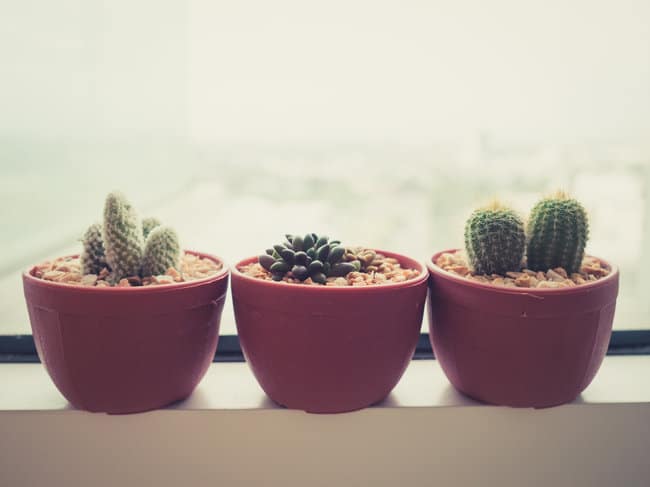
All cacti are succulents, but not all succulents are cacti
Surprised by this statement? People usually refer to them as a single plant category, but there is a considerable difference between them.
Cactus (plural cacti) is characterised by needle-shaped spines and fleshy stems, while succulents are a broader category that includes cacti and many other kinds of plants.
A notable difference between succulents and cacti is that cacti have areoles; areoles are small bumps present on the cacti. These areoles are responsible for the growth of leaves, spines and hair. So, it can be stated that those succulents with areoles are cacti.
Ways to Grow Cacti and Succulents
Succulents are grown in two ways:
1. Growing From Seed
Succulents can be easily grown from their seeds. These seeds can be easily bought from online stores, shops or obtained from your own plants. The ideal time to plant the seed is the spring season.
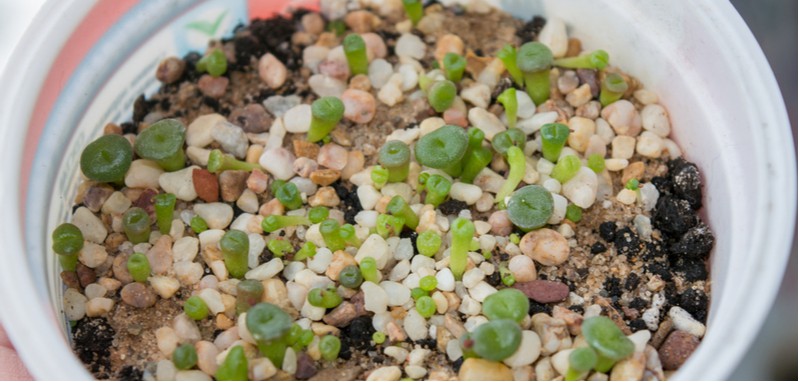
Plant the seeds in a wide container and add compost and grit. Use a misting bottle to water the seeds, cover it with glass or plastic and leave it in the sunlight for a few days. Keep in mind during this stage, it does not require direct sunlight.
Succulents need a spot that is ventilated and sunny. To allow for ventilation, remove the plastic covering once the condensation takes place and wipe it with a cloth. Maintain the moisture of the compost throughout the growing period. You can shift the plant once it grows big enough to be handled easily.
2. Growing From Stem and Leaf Cuttings
Using leaf and stem cuttings is the most popular way of propagating succulents, and almost all the major varieties of succulents can be propagated in this way. Spring and summer are the best seasons for propagation.
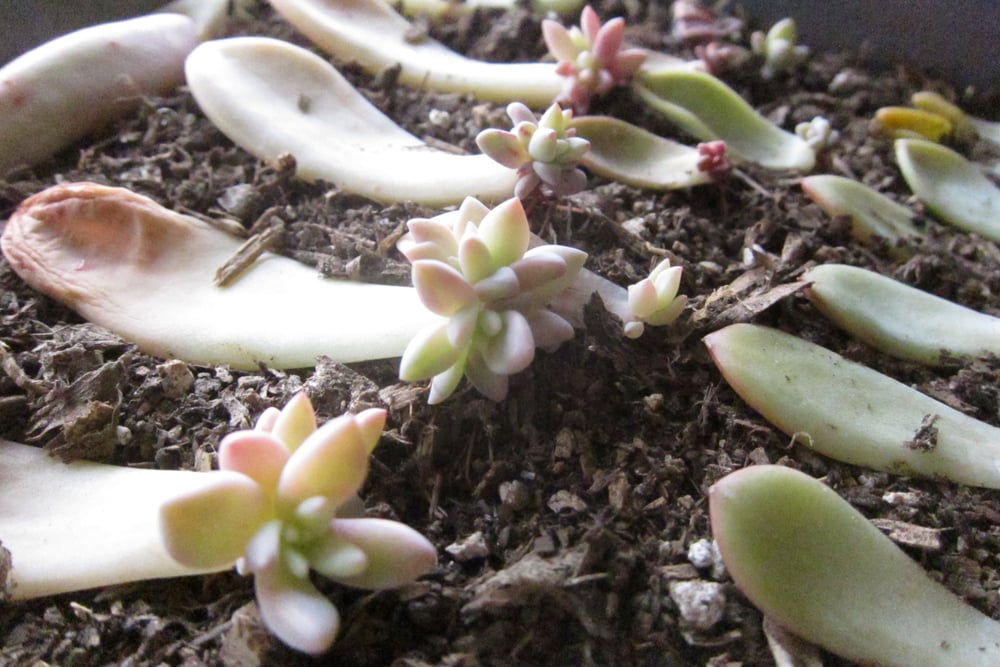
Leaf propagation works with succulents that have fleshy leaves, such as Echeveria and Crassula. You can take the leaf cuttings from succulents and grow them in a pot by providing it with all the natural resources.
While taking the leaf cuttings, it is important to ensure that the leaf remains intact. Otherwise, the leaf may lose its moisture and rot.
Taking stem cuttings is a little more complicated than leaf cuttings. You will need a sharp knife to cut the stem carefully; make sure that the stem has a few leaves. Leave these cuttings for a few days to develop callus and then use it for planting.
Planting Your Succulents
Once the leaf or stem is done producing callus, you can start the process of planting.
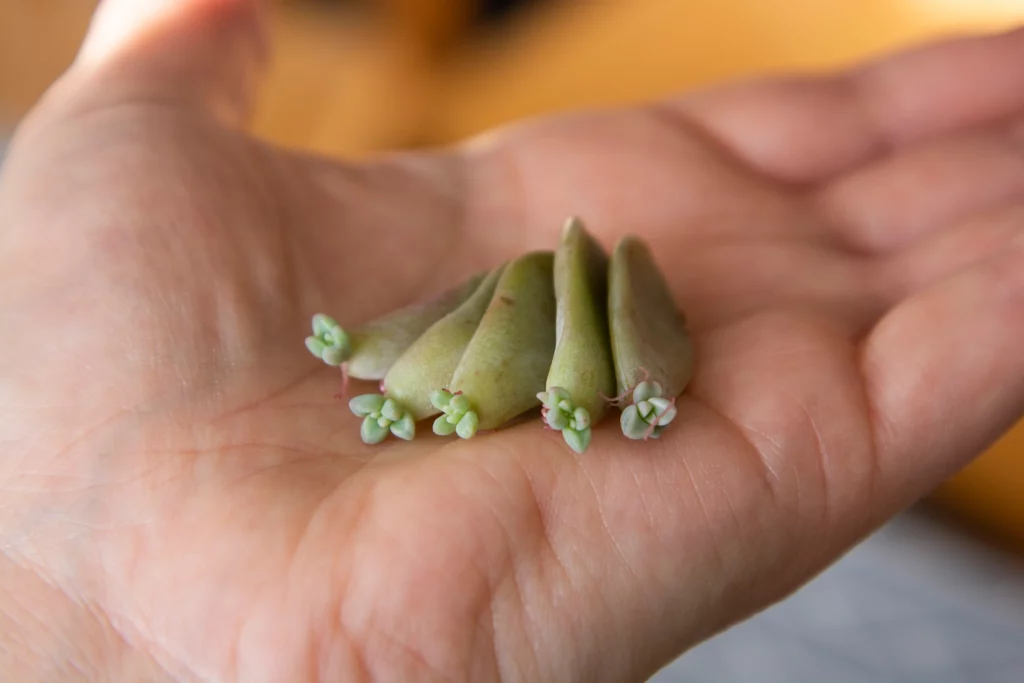
Cacti and succulents are the easiest and most widely grown plants. Almost all succulents can be grown at home with minimum care. To grow cacti and succulents, first of all, choose the right spot for them. An ideal spot for them would be a place which has bright light and is ventilated with dry air.
Choosing the right size of the pot is also necessary so as to grow and maintain a healthy plant. The pot size depends on the kind of succulent you are growing. A wide and shallow container works best for most succulents.
The wide container will also allow propagation easily and can fit many succulents in it. Just remember to keep ample spacing between each plant so as to allow for proper growth.
Take a free-draining pot and fill it with compost and grit such that there is two part of compost to one part of grit. Succulents are usually grown in groups, so you may want to plant about 4-5 plants in a pot.
For planting the stem or leaf cuttings, insert the cuttings into the potting mix and gently tap the soil around it. Wait until roots begin to develop, and then water the plant.
These plants do not thrive well in regular potting mix; they need a mix that drains quickly. A mixture of 30-40% soil, an equal amount of sand, 10-20% of pumice stones, and 10-20% vermicompost or cow dung compost; you can also add 10% charcoal.
They require ample sunlight, so keep the pot on a sunny windowsill, greenhouse or conservatory. Succulents also require proper watering during the growing season, from March to September. Watering once a week is enough for succulents in this season. Do not add excess water to the plant as it will make the soil mushy; it could be fatal for the growth of the plant. Always allow your pot to drain away excess water.
During winter, they go into dormancy, just like many other plants, and can do well without water.
Cacti and succulents are also prone to pests like mealy bugs and red spider mites, so a good-quality insecticide should be chosen to keep the plant healthy.
Caring for Your Cacti and Succulents
Now that you are all done with planting your succulents, it’s time to ensure that they stand the test of time. Here is the list of things required to grow beautiful cacti and succulents in your backyard.
1. Sunlight Requirement
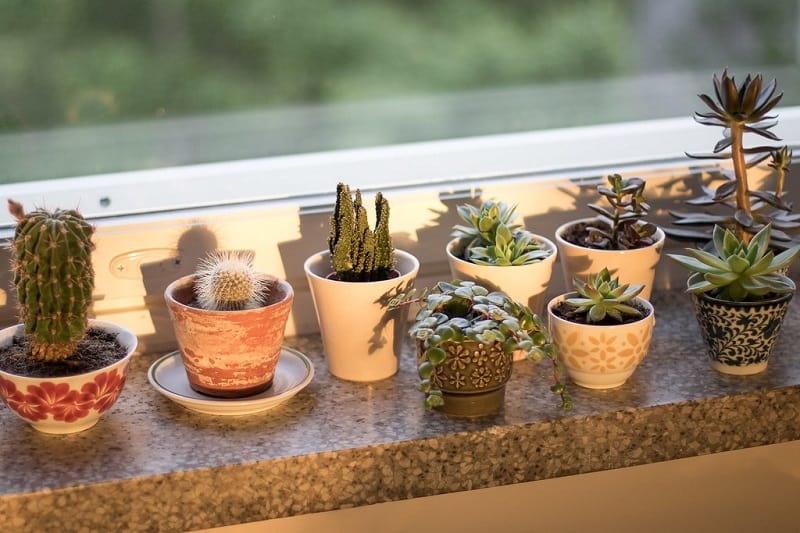
Although succulents are known for growing in dry regions, direct sunlight can do more harm than good. They need a minimum of 6 hours daily to grow to their full potential; however, scorching heat is quite harmful to them. In addition, high-intensity direct sunlight can cause their leaves to turn yellow. You may provide your cacti and succulents with shade so that they receive indirect bright sunlight. Place them in a south-facing position to maintain their optimal sunlight requirement.
2. Soil and Compost Quality
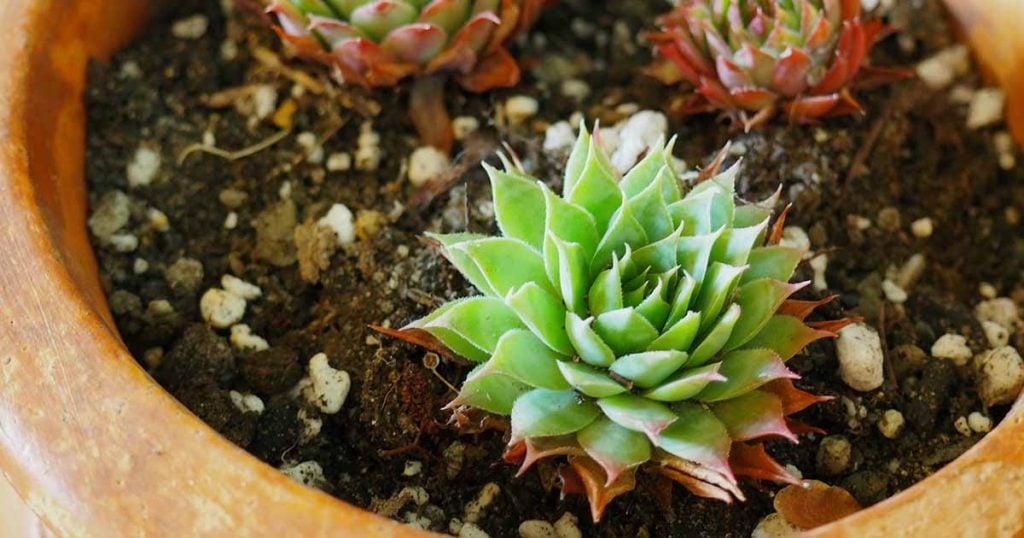
Choosing the right potting mix is significant for growing succulents; they will not thrive in any garden soil. Well-draining soil with compost mixed with grit and sand is required to grow succulents. Porous and sandy soil works best for growing succulents as it does not hold water.
3. Watering Your Succulents
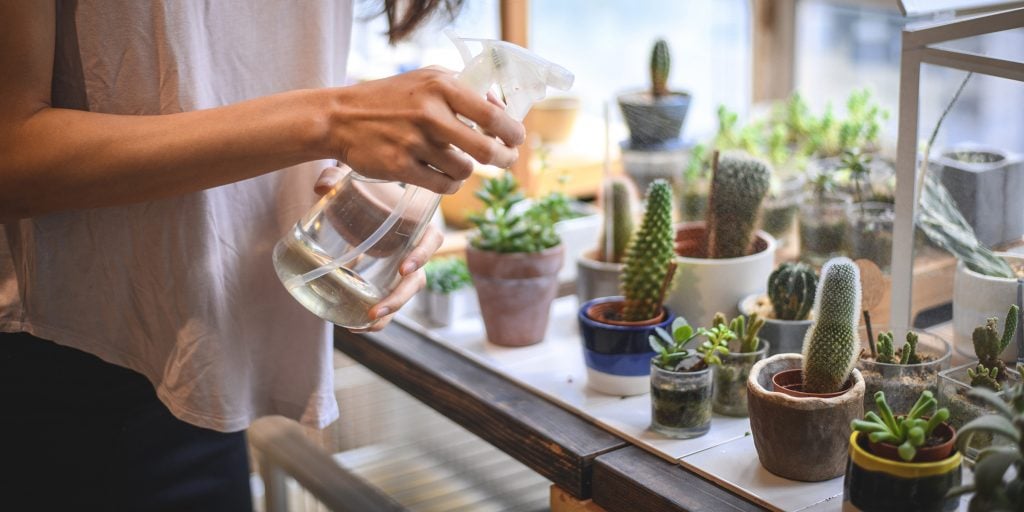
There is a misconception regarding growing cacti and succulents that they do not require water. However, it is far from being true. They require water as much as other plants do, especially in the summer and spring seasons. It’s just the intensity of watering that needs to be regulated for these plants. Make sure that they do not remain under or overwatered, as in both cases, these plants won’t be able to survive. During the growing season (spring and summer), they should be watered once a week, while in the autumn and winter season, you can stop watering them, or they should be only watered when the soil dries. Water requirement is also dependent on the type of succulents you are growing.
4. Feeding
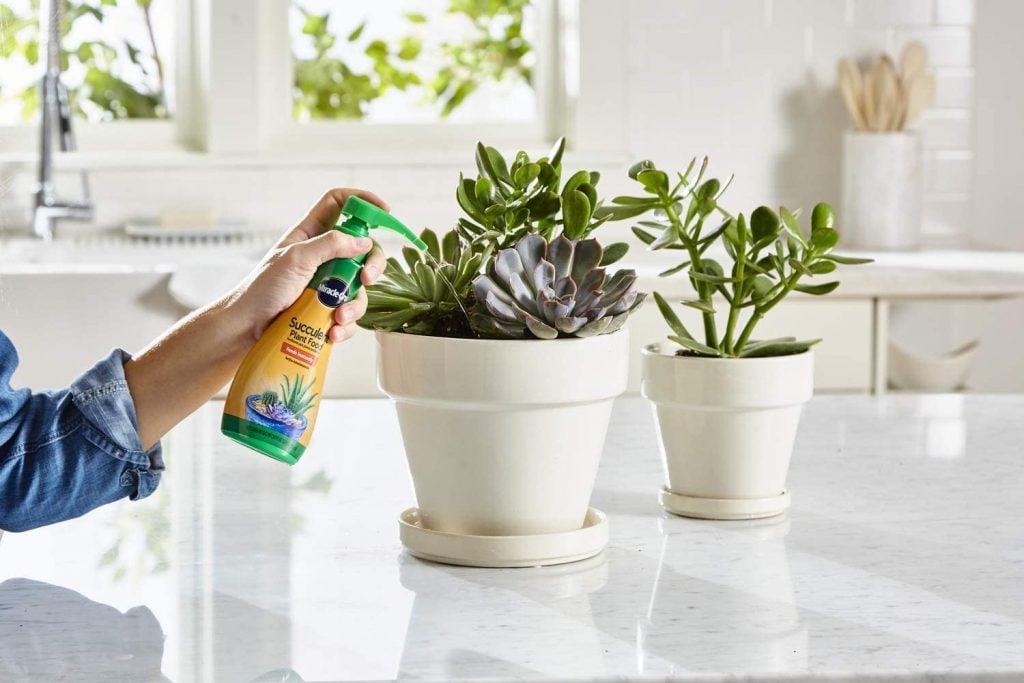
To maintain their proper growth, you can feed your succulents cacti and succulent feed once a month. Feeding promotes growth and flowering in succulents and protects them from diseases. Mix 5 ml of feed in 1 litre of water and spray on the plant.
5. Pruning
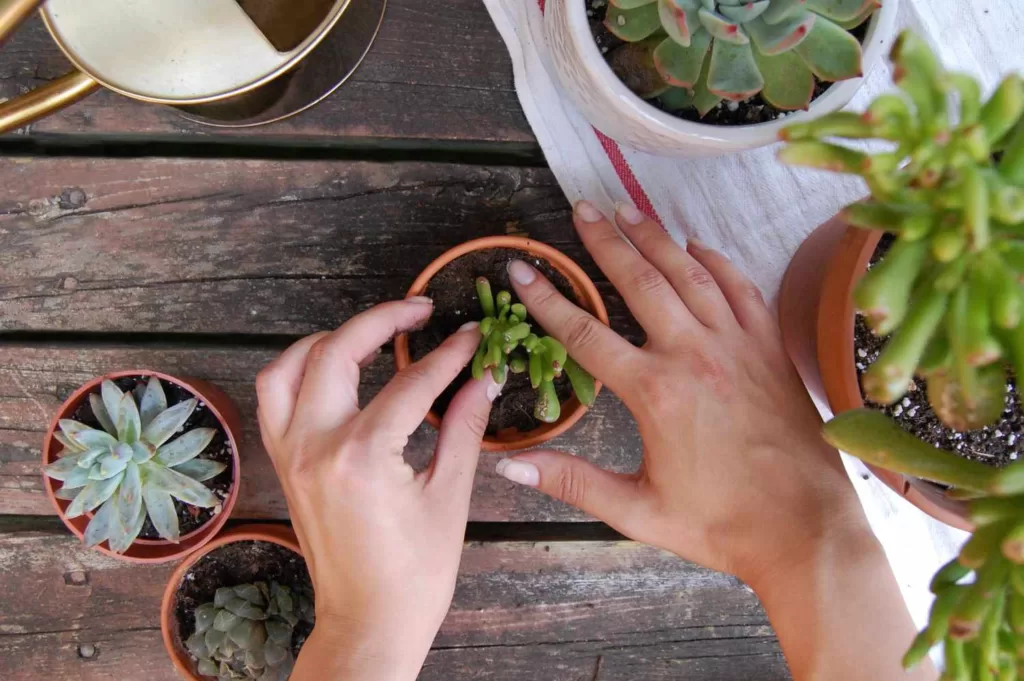
Most cacti and succulents can do well without pruning, while some taller ones may be required to be trimmed if you are cutting the stem carefully above the leaf node. This will result in proper growth of the succulent. The stem that you have cut can be used again to grow new plants.
6. Pest and Disease Protection
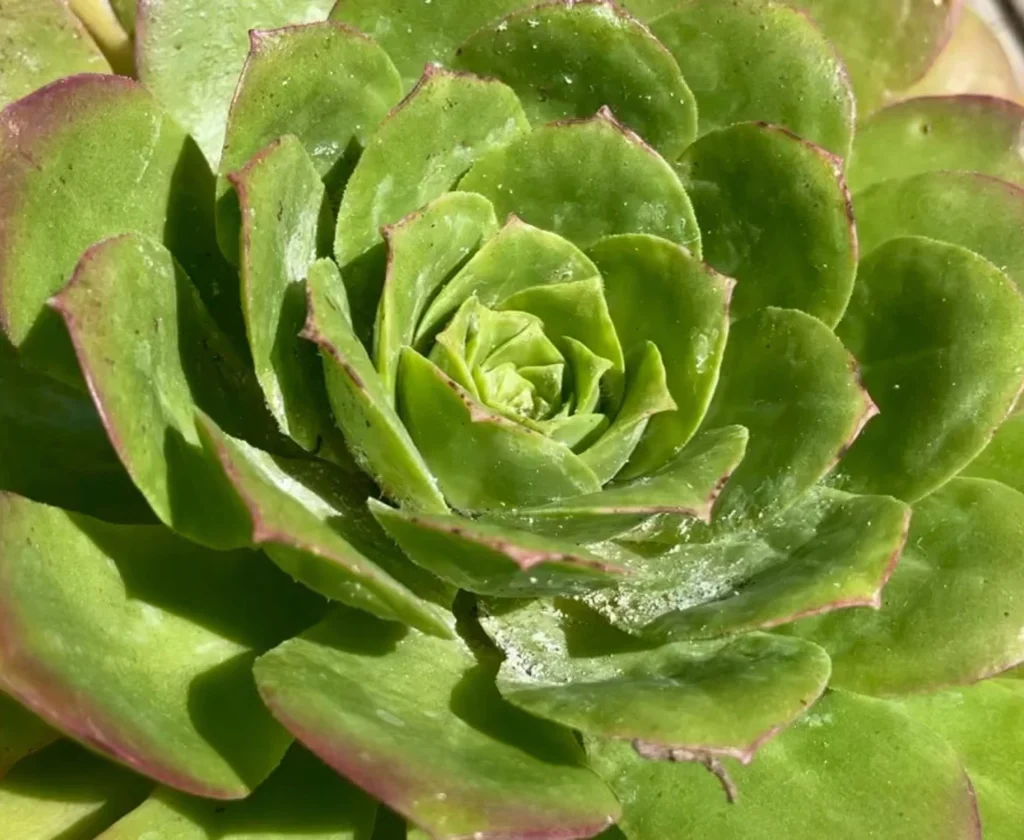
Indoor succulents are not usually affected by pests, but gnats can often appear on your beautiful succulents and destroy them. They often lay eggs outside the leaves and grow to infest the plant. You can spray your plant with 70% Iso Propyl Alcohol to get rid of eggs and larvae produced by gnats.
Mealybugs are also common visitors for cacti and succulents. They are the result of overwatering and over-fertilising the plant. Spraying with 70% Iso Propyl Alcohol also works in this case.
Conclusion
Cacti and succulents are undoubtedly the easiest-growing and most charming plants to grow indoors or in your garden. There are various varieties to choose from; they are easily available in most shapes and sizes.
They do not require much attention and can be easily left for days without any care. However, a few things need to be kept in mind while growing cacti and succulents, such as choosing the right potting soil, understanding their water requirement and protecting them from Gnats and mealybugs.
Succulents do not need many fertilisers; they can do well without fertilisers; however, during the growing season, you can lightly sprinkle a good quality fertiliser to maintain their health. Don’t forget to dust your succulents with a soft brush or damp cloth to keep them looking bright and beautiful.

